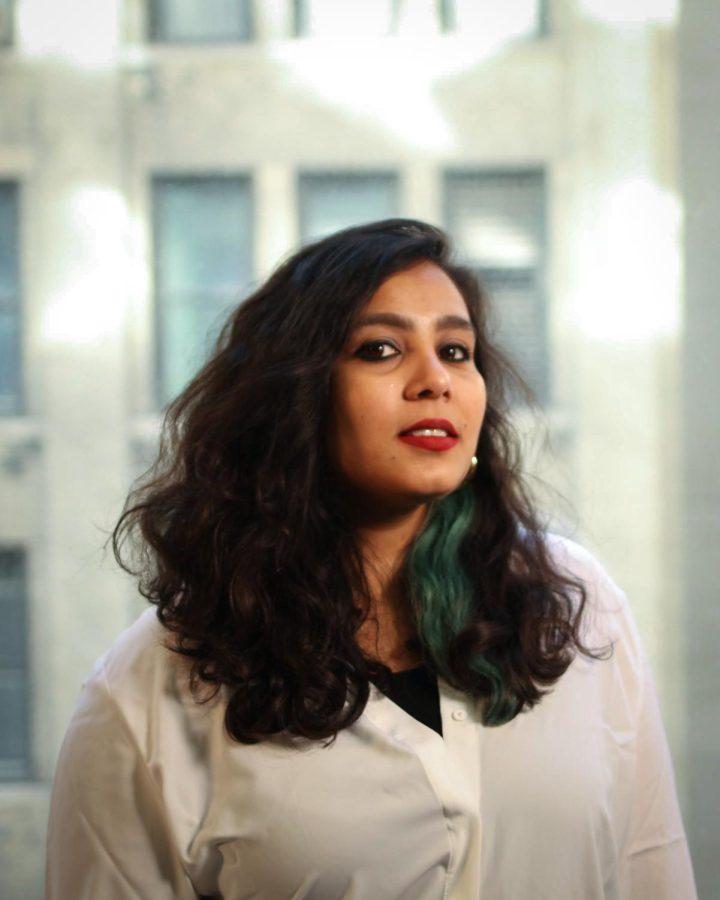Yashica Dutt discusses caste struggles, discrimination
October 6, 2022
Trigger Warning: This article contains mentions of discrimination and suicide.
On Thursday, Sept. 29, Macalester College welcomed anti-caste activist Yashica Dutt for “Coming Out as Dalit,” a Conversation with Yashica Dutt.
Dutt is a journalist and the award-winning author of the book Coming Out as Dalit. In addition to Dutt, anthropology professor Arjun Guneratne and University of Minnesota PhD student Vishal Jamkar facilitated the discussion.
Dalit is a term used to describe a person who does not belong to a named caste in the Indian varna caste system. Dalit people are also referred to as “untouchables.” They are often subjected to discrimination and ridicule both within India and in Indian communities in the U.S.
After being introduced by Jamkar, Dutt read a few paragraphs from Coming Out as Dalit. In the excerpt, Dutt detailed caste discrimination in education, including the negative effects of this discrimation and violence that results. She told the story of Rohith Vemula, a Dalit student at the University of Hyderabad who committed suicide in 2016. According to Dutt, this was part of a larger trend at the university.
“Eight Dalit students had committed suicide … between 2006 and 2016 alone,” Dutt said. “It is important for us to talk about these issues because they are institutionally antagonized.”
Dutt said that coming to the United States made her realize that caste is an issue. Growing up in India, Dutt said discrimination and violence against Dalits was normalized. She did not think to question her experience until she was asked in class to share her worst experience with discrimination and shared it with her classmates.
“It was when I saw the anger and the pain on their faces that presented to me that what has been happening to me my entire life was wrong,” Dutt said. “And I realized I can’t ask people to share their stories if I don’t share mine. So that’s why I wrote the excerpt I read today.”
Yashica then spoke about her mother’s influence, both in her upbringing and in her book. Dutt explained how her mother’s insistence on her daughters’ education allowed Dutt to come to the United States, and, in turn, write Coming Out as Dalit.
Dutt said her mother had to fight patriarchy as well as caste in India. Dutt’s mother had two daughters, which caused some in her community to look down on her. There was strong cultural emphasis on having sons, which left daughters undervalued. However, her mother insisted that Dutt and her sister go to an English-speaking school.
“When I was born, my mother decided that I would not have the life that she had led,” Dutt said.
The discussion then turned to criticism of those who hide their Dalit identity. Jamkar asked Dutt what she would like to say to those who do choose to hide their caste. Dutt responded by saying she was one of those people too.
“Even four years ago, I would be wracked with anxiety to even say [Dalit],” Dutt said. “[Society needs] to not have pressure to say ‘this is how you should be Dalit’ or ‘there is only one way to be Dalit.’”
Dutt then touched on caste discrimination in the United States.
“Folks in the U.S. need to understand that in Indian communities in particular, these issues are mirrored and parallel,” she said.
She explained that, although it is not always visible to non-South Asians and can sometimes be mistaken for racism, caste discrimination in the United States is still prevalent. Dutt also clarified the difference between racial discrimination and caste discrimination, the latter of which she described as an “invisible issue,” explaining why it is more difficult to end caste discrimination both in India and in the United States.
Dutt also explained the economic impacts of the caste system in India.
“The way we understand it in India, class and caste are very much parallel: if you have money, you must be upper caste and if you don’t have money, you must be Dalit,” Dutt said. “The reality is, it’s not that simple in India.”
While caste and class are very much linked, Dutt said the key difference is in opportunities, explaining that a Brahmin — an upper-caste individual — would always be awarded an opportunity over a Dalit.
Dutt also gave the example of her own mother’s attempt to start a business. Her mother attempted to start a food truck business, but it quickly failed, partially because everyone knew Dutt’s family was Dalit and because knowledge about business is confined to certain castes.
The presenters then moved on to audience questions, both from those in the room and those joining virtually. Dutt answered a question about how first-generation Indian Americans are more receptive to caste struggles as well as how they uphold the caste system. She also discussed Dalits in the film industry and the political implications of comparing race and caste.
As the conversation neared an end, one audience member asked Dutt what actions upper-caste Indians could take to be allies to Dalits. In response, Dutt emphasized holding important conversations with family members, and she also called on upper-caste Hindus to call out jokes or slurs and to stand up against discrimination.
“Recognizing your own passivism is a start,” Dutt said. “Stand up for Dalit people, and make it a safe space for Dalit people, even those who are not coming out.”
Ari Pincus-Kazmar contributed to the reporting for this story.













